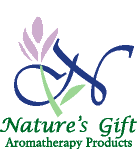Because we do not know how you are going to take care of these lovelies after you receive them.
There are three specific factors that will damage your essential oils, and specific steps you can take to protect them.
- Heat
- Light
- Air - Oxygen

1.HEAT
The best way to extend the shelf life of all oils is to store them under refrigeration. Now, that is a direct quote (more or less) from Robert Tisserand. He recommends refrigerating all oils. This is not always possible, or realistic. But we strongly urge that you store the Citrus Rind oils, the Conifers (needle oils.. fir, pine, spruce, etc.), and the "Blue" oils, in the refrigerator if at all possible. If refrigeration is not an option, find the coolest spot of your house for long term storage.
2.LIGHT
Bright sunlight does as much damage as summer's heat. We would love to ship our beautiful oils and extracts in clear glass, so that you could see the range of colors, but it is not in your best interest. The cobalt glass that we use blocks 70% of ultraviolet light, and (on the five ml bottles) the labels cover most of the glass. Still, that's not enough. Please store your oils either in a covered box, or in a cabinet.
3.AIR - OXYGEN
The third factor that will shorten the life of your oils is Oxygen, in the air we breath, and of course, in every bottle. Leaving a bottle open or loosely sealed will definitely cause oxidation. To lengthen the shelf life of your retail sized oils, consider decanting them into smaller bottles, either upon arrival, or as the level in the bottle drops. If you are buying in larger, bulk sizes, we urge you to use our "Oxygen Barrier," a blend of inert gasses, heavier than air, that float on top of the oils and prevent contact with the oxygen in the bottle. (It is to apt to cause splash back in the smaller retail sized oils.)
So, to sum it up, to protect and extend the life of your beloved oils, store them cool, dark, and away from air. It's that simple.
Except that it isn't always. I keep a small selection of oils and blends on my bed table. In air conditioning, but certainly not refrigerated. But for the most part, they are in small (two or five ml) bottles, or, if larger, I know I will use them within three or four months, well within the 'best usage' time frame. So there is the "ideal" storage, and then there's what works. If I had small children, I would be more concerned in storing the oils out of a curious child's reach than I would be extending the shelf life.
For a real life example of how heat, light, and temperature can affect an oil, try this experiment. Pour a few drops of cold pressed Orange Oil in a saucer or a glass, and let it sit on a sunny windowsill for a few days. You will find yourself with a thick, sticky mess as the components of the oil become oxidized. You have just sped up the process that would have happened inside an improperly stored bottle.
To give you an estimate on many (but not all) of our oils' shelf life we have added an "estimated shelf life" to the long description of the oils we offer on our website. (Scroll down, it's at the bottom, near the gc/ms links.) We are gradually researching those that we don't know.
Best suggestion we can give? Even though purchasing in bulk, or larger sizes always gives you a lower price, please don't buy more than you can use within the estimated shelf life. At cool room temperature, out of direct light and away from heat, you can probably expect the average, middle of the quoted range. Keep refrigerated, tightly sealed, decanted into small bottles, they may well exceed the estimate.
Because we store our fragile bulk oils under refrigeration, and the less fragile at "cool room temperature" and all are stored under our Oxygen Barrier they can not oxidize while in bulk storage. This is why the countdown for aging begins when you purchase and open.
Another question, we are frequently asked, "Will shipping the oils in summer's heat ruin them?" The answer is no. It would be best NOT to let them sit in a sunny hot mail box all day, if you can possibly have them delivered when you will be home to receive them, or ship to an alternate address. But no, they will not be ruined. Allow them to cool down to room temperature before opening them though. This is what we do with the bulk oils we import. Jim will often wait till the following day to decant and measure.
Hope this helps!





